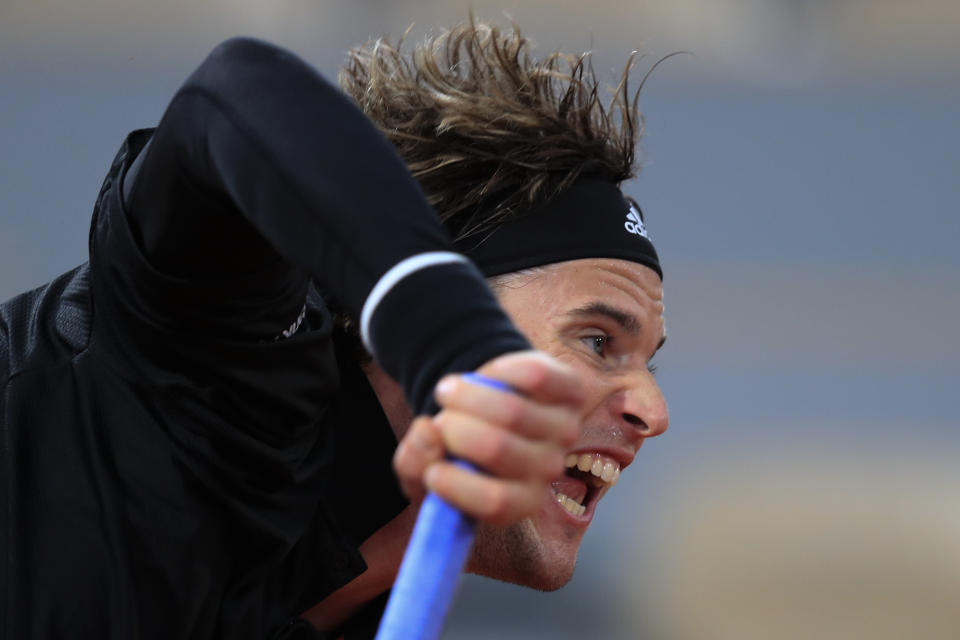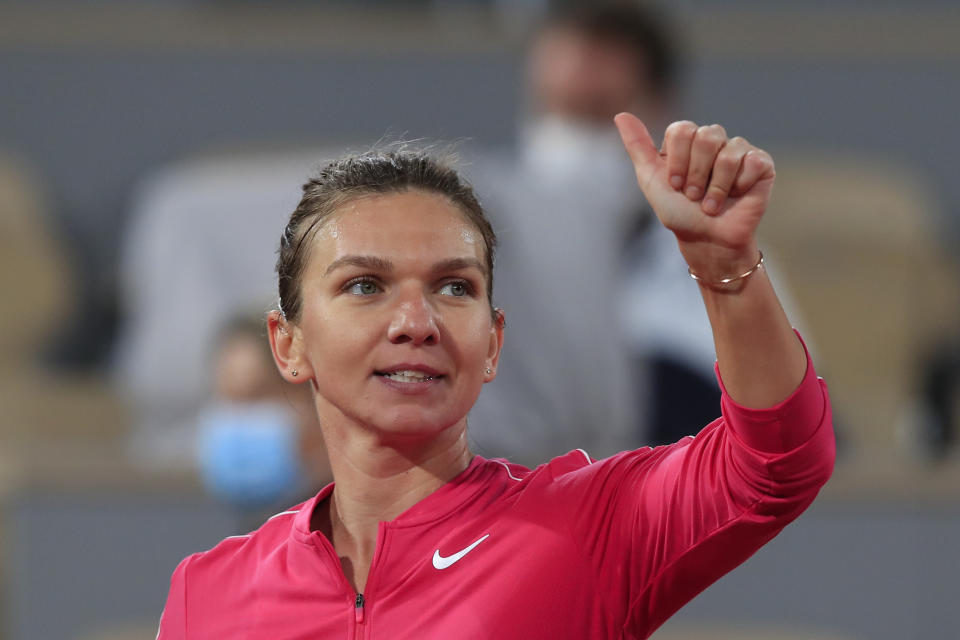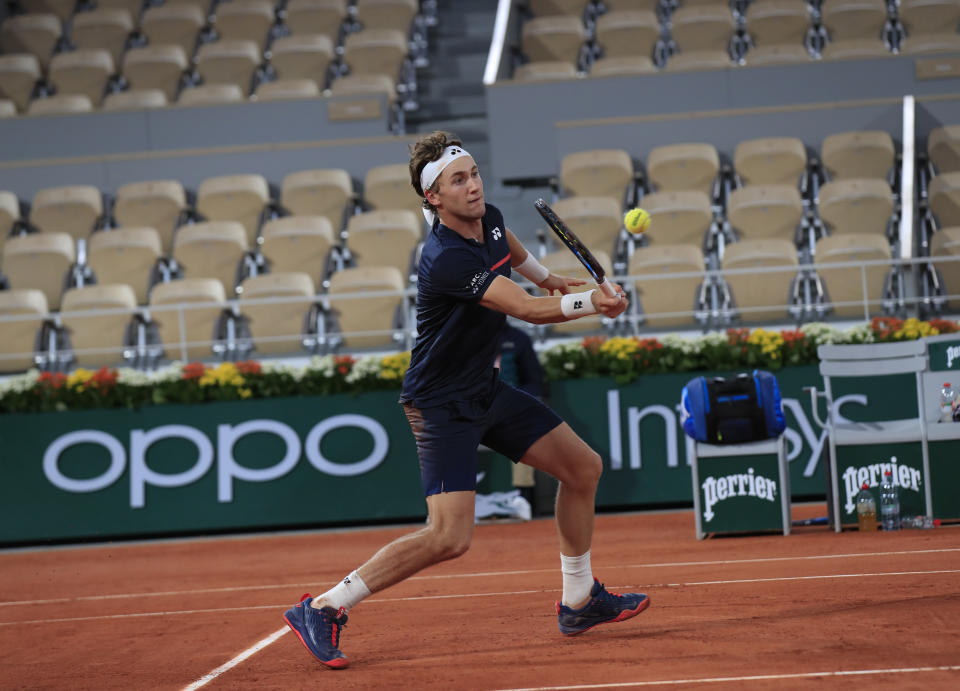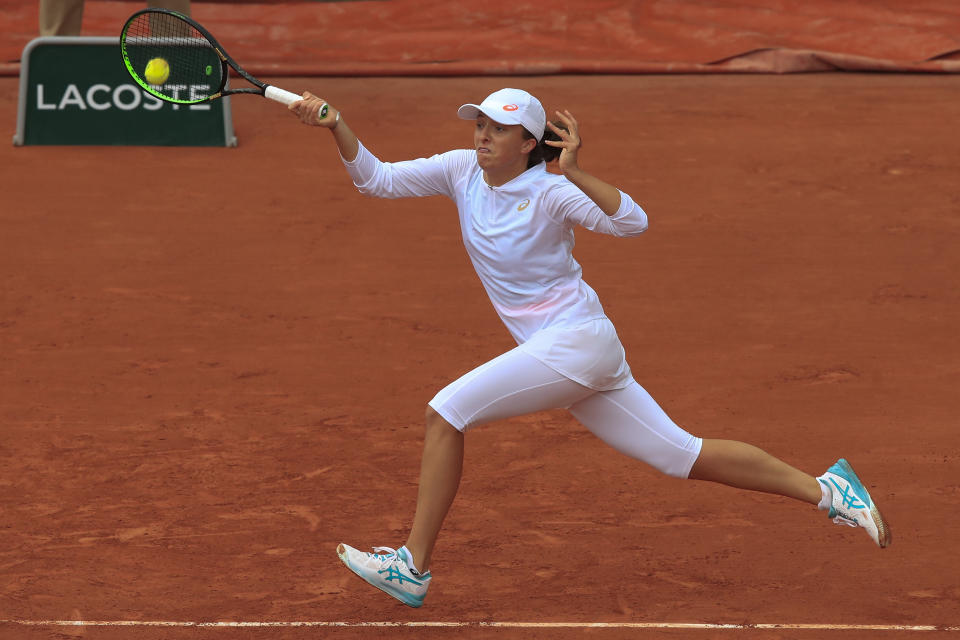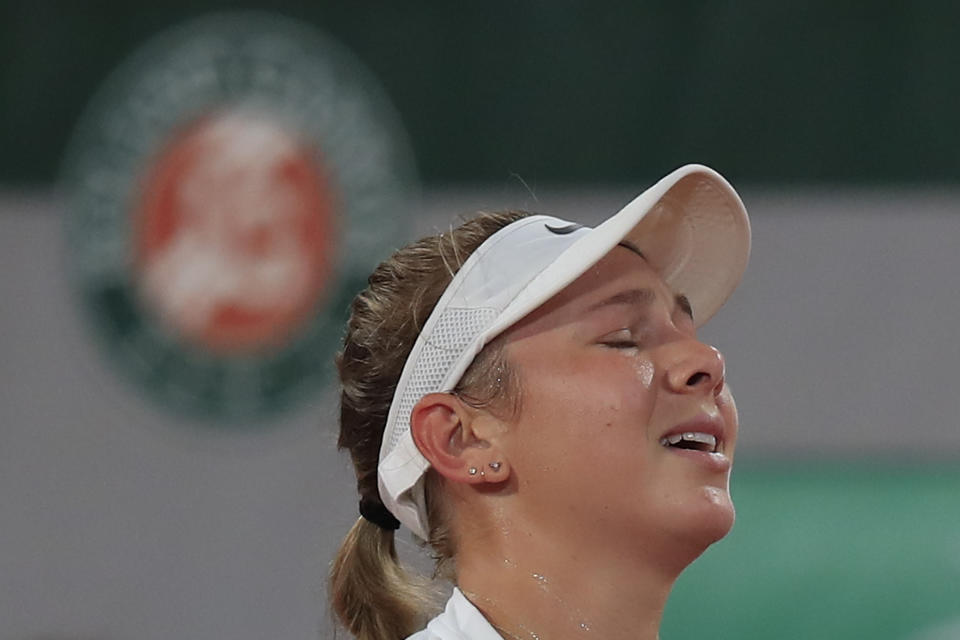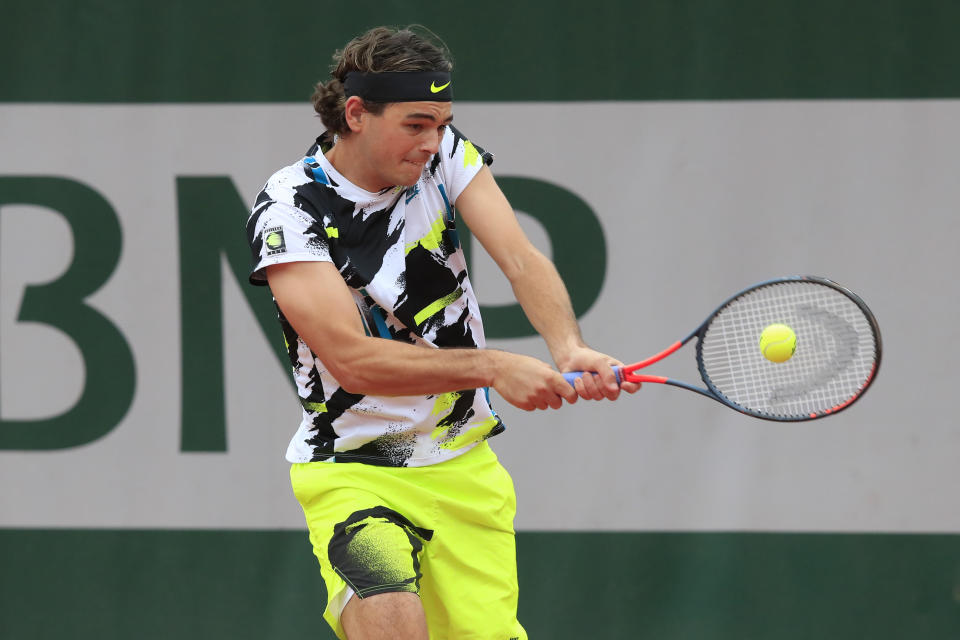More players want electronic officiating help at French Open
PARIS (AP) — Add U.S. Open champion Dominic Thiem and the man he beat at the French Open on Friday, No. 28 seed Casper Ruud, to the growing chorus of players who think electronic line-calling should come to clay-court tennis.
It’s not a new idea. And there are questions about the accuracy of that sort of system on clay, where the red dust shifts, making it harder for the machine to be as right as it can be on hard courts.
Still, just in the past couple of days at Roland Garros, top-10 seeds Stefanos Tsitsipas and Denis Shapovalov have raised the issue, as did 2018 semifinalist Marco Checcinato, who grumbled about it during the third set of his third-round loss Friday.
“Today in my match there was a mistake -- in my favor actually,” two-time French Open runner-up Thiem said after beating Ruud 6-4, 6-3, 6-1. “Casper showed me the mark on his phone after the match.”
Thiem played at a tournament in Brazil where a system fine-tuned for use on clay, specifically, was tested.
“There were not any issues,” he said. “So I hope that next year, we will have it in every clay-court tournament.”
After Ruud disputed a couple of calls with the chair umpire, some buddies back home in Norway who were watching the match took a picture of one of the ball marks on the TV sceen and sent it to his phone.
“It was,” he insisted, “quite clearly out.”
HALEP TURNS IT AROUND
A year ago, Simona Halep’s French Open title defense ended in Court Philippe Chatrier with a lopsided loss to American teenager Amanda Anisimova in the quarterfinals. They met again Friday -- same tournament, same stadium, similar scoreline -- but this time it was Halep who dominated, winning 6-0, 6-1 in less than an hour.
“I was playing really bad,” said Anisimova, a fair assessment given that she made 32 unforced errors, 25 more than the No. 1-seeded Halep. “It’s been one of the worst matches I have played in a while. I was just making mistakes all over the place.”
The key, believe or not, might very well have been the second game.
“Very important,” Halep called it.
She double-faulted twice, helping the 25th-seeded Anisimova accumulate five break points.
But Anisimova couldn’t convert any of those chances and never held another break point.
Now comes another rematch for Halep, against another 19-year-old: Her fourth-round opponent is Iga Swiatek.
In 2019, Halep won their fourth-round match in Paris 6-1, 6-0.
“I know for sure that my game is better,” Swiatek said, “so hopefully this match is going to be longer than 40 minutes.”
BREAKING THE TIE
Thirty minutes; 36 points.
Lorenzo Sonego and 27th-seeded American Taylor Fritz engaged in quite a tiebreaker Friday, the longest ever played in a men's singles match at the French Open and tied for the second-longest at any Grand Slam tournament.
Each man held more than a half-dozen sets points. It finally ended when Sonego took the last two points with drop shots and ended the match, winning 7-6 (5), 6-3, 7-6 (17) to get to the fourth round at a Grand Slam tournament for the first time.
“I’m going to be up all night,” Fritz said, “thinking about what I could have done different.”
The only longer Grand Slam tiebreaker came at the Australian Open in 2007, when Andy Roddick and Jo-Wilfried Tsonga played one that lasted 38 points.
___
AP Tennis Writer Fendrich reported from Washington; AP Sports Writer Leicester reported from Paris. AP Sports Writer Jerome Pugmire in Paris contributed to this report
___
More AP tennis: https://apnews.com/apf-Tennis and https://twitter.com/AP_Sports
